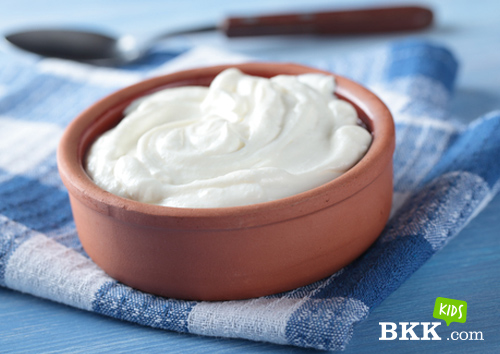Making your own yogurt, a popular food for babies and children, is pretty easy. It saves money, tastes great without artificial additives, and offers many health benefits, including promoting normal intestinal function during a bout of food poisoning. All you need is some milk (full fat or low fat milk will make the thickest, creamiest yogurt), and plain yogurt for the starter culture. For the latter, Greek or regular (unflavoured) yogurt will do; just make sure they contain live active cultures, which is what turns milk into yogurt.
You can use a yogurt machine, such as the Severin Yogurt Maker from Verasu. This holds the yogurt at a steady temperature during the fermentation process.
Basically, leave yogurt out for a while at room temperature, as it makes it easier to stir with cold milk. Alternatively, leave the milk out – but it can be hard to gauge how much you’ll need. Add 1 to 2 teaspoons of natural yogurt into the glass jars. Divide the milk equally into the jars (about 160 ml max) and mix the contents thoroughly. Fit the lids and screw them on tightly. Leave the machine on for 12 hours (overnight) or follow the manufacturer’s instructions.
You can add organic honey or fruits to the finished yogurt afterwards, but never before or during the process. Save the last jar of yogurt to make the next batch. You can do this four or five times before it starts to get too watery; in that case, buy new yogurt to start the process again.
If making yogurt without the use of a dedicated yogurt maker, you’ll need a heavy pot with a lid, such as a Dutch oven. Mix slightly warmed or room temperature milk with the starter culture (about 900 ml of milk for each 60 ml of yogurt) and stir well. Once the lid is on, the pot keeps the milk at a fairly steady temperature (ideally around 43 to 50 °C) during incubation. You can pre-heat an oven to such low temperatures and leave the pot in there overnight. The yogurt will be ready to eat in the morning, or you can refrigerate it and let it thicken further.
That’s it! Once you have the basic method down, there are other things you can try, including experimenting with different starter cultures, for slight variations in taste; or straining off the liquid whey for a thick Greek-style yogurt.
Register your email address here and we’ll notify you when a new article gets uploaded.


















